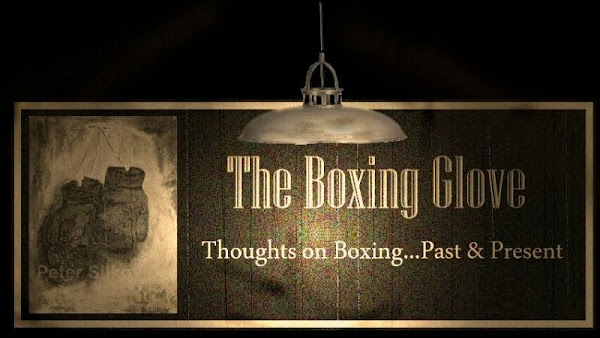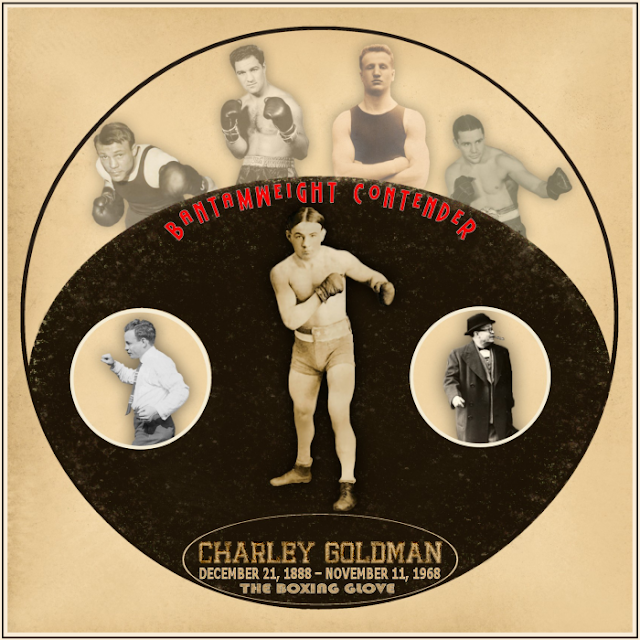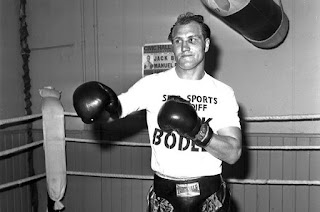When
Guillermo Rigondeaux (17-0, 11koes) takes on Vasyl Lomachenko (9-1,
7koes) next week (December 9) at New York’s Madison Square Garden,
it will be a throwback fight to the days of the 1980s, when the
highly-tuned,and technically gifted, champions of that era regularly
faced off against each other in matches, which are now part of the
sport's rich history.
For
raw technical brilliance, it is difficult to find any other active
boxers who can compare with either Lomachenko or Rigondeaux. Both
men had superb amateur careers, culminating in each man winning two
Olympic Games Gold medals each. This is the first time in boxing
history that two boxers, both with two Olympic Gold Medals each, have
met as professionals for a world championship. Both men have
unbelievable amateur records, with Rigondeaux’s reported to be
463-12, and Lomachenko’s amateur record said to be 396-1. The fact
that both men are also southpaws, adds yet another twist to this
pugilistic duel.
We
have to go back perhaps to the first Sugar Ray Leonard vs Roberto
Duran match in 1980, (for Leonard’s WBC world welterweight title)
to find a comparable match up in regards to seeing two such
technically gifted warriors toeing the line against each other.
Indeed there are parallels between the two matches. Lomachenko has
been hailed by many as the Sugar Ray Leonard of his generation, and
like Leonard, the Ukrainian mixes a heavy dose of flashiness with his
boxing speed, and skills.
Meanwhile,
Rigondeaux, while outwardly a very different animal to Roberto Duran,
is stepping up two divisions to meet Lomachenko, just as Duran did
against Leonard, and like Duran was against Leonard, Rigondeaux goes
into this match on Saturday night, despite all his ability, the firm
underdog.
It’s
not difficult to see why ‘The Jackal’ is the underdog. When he
challenges Lomachenko for the WBO Junior-lightweight championship, he
will be stepping up two weight classes, from his usual
super-bantamweight division home. A jump of eight pounds might not
sound much to the average man on the street, but when you are in the
lighter divisions, eight pounds is indeed a lot of weight to suddenly
travel, especially when it is to meet an opponent as highly gifted as
Vasyl Lomachenko.
Unlike
many champions today, Rigondeaux does not lose, and then gain a
significant amount of weight between the weigh in and fight night. He
is a small looking super-bantamweight, who has often been outsized by
his opponents.
In
addition to the size difference, ‘Hi-Tech’ Lomachenko is the
younger man by eight years. In a contest that both men are so evenly
matched, with regards to boxing ability, such advantages, like those
held by Lomachenko over Rigondeaux, could rightfully be seen as a the
telling factor between them.
Undeniably
it is these advantages that have led Lomachenko’s promoter, Bob
Arum, to take the match with Rigondeaux. Arum and Rigo have a well
known enmity for each other, which can be traced back to when
Rigondeaux beat one of Arum’s ‘golden eggs’ Nonito Donaire,
back in 2013. Rigondeaux didn’t just beat Donaire, he out-boxed
and out-fought him in a manner that made him look foolish at times.
Arum
big plans for Donaire were well and truly dashed by his defeat to
Rigondeaux, and although he promoted both men, he was incensed by
the result, and went on to denigrate Rigondeaux a number of times
publicly in a manner that was quite extraordinary, when taking into
account the fact that Rigondeaux was supposedly Arum's fighter, as
well as Donaire.
In
the run up to this showdown, Arum has still been talking about
Rigondeaux ‘stinking out’ the place. It seems Arum no longer
appreciates the finer points of the sweet science, and has grown too
lazy to promote such boxers.
It's
no exaggeration to say that ever since he beat Donaire in 2013,
Rigondeaux has been effectively blackl
isted, and has become the most
avoided boxer in the sport. Incredibly, it says a lot about the
state of the sport when an outstanding world champion, perhaps the
best pound-for-pound of his era, is left scrabbling for fights, as
his possible opponents and top contenders choose to meet other
champions and each other, rather than him. The way in which his world
titles were stripped from him, handed out to Carl Frampton and Scott
Quigg, so that they could have their own little private party with
themselves (and what a thriller that turned out to be!!) speaks for
itself.
In
the six fights that he has managed to have since beating Donaire in
2013, Rigondeaux has found the kind of big matches, which his skills
deserve, impossible to make. Until now that is. On December 9th,
Rigondeaux has the chance to display his rare ability in a manner
denied him since he beat Nonito Donaire. The irony that he will be
doing it against a Bob Arum fighter is unlikely to be lost on him.
Undoubtedly
Arum sees this contest as very winnable for Lomachenko, and one which
will provide the Ukranian with an outstanding name upon his record,
and provide Arum himself with perhaps a little bit of revenge, for
what Rigondeaux did to one of his favourite fighters (Donaire) back
in 2013.
The
most intriguing question here is whether Arum has made a
miscalculation, just as he did on that night of April 13th
2013, when he let ‘The Jackal’ loose on Nonito Donaire?
Rigondeaux was supposed to be a good name on Donaire’s record that
night, but it didn’t turn out that way.
One
aspect of this fight, which should not be ignored, is Rigondeaux’s
own willingness to take the fight, despite the weight disparity. In
fact, Rigondeaux has done much to make the match with a marvelously
inventive twitter campaign.
‘The
Jackal’ has shown a calm confidence throughout the build up to this
showdown, and regarding the weight difference, he said in a recent
interview: ‘The most deadly poisons come in the smallest
containers’.
Lomachenko
has been brimming with confidence in the lead up to this fight, as
would be expected, but there is something deeply impressive in quiet
confidence of Rigondeaux. He knows that this is his night to show
what he can do for the first time since the Donaire contest. This is
a fight that will define his career, a victory should see him crowned
as the number one boxer pound-for-pound in the world, defeat on the
other hand. may well see him swept under the carpet for good.
Head-to-head,
these two men match up like fire and ice. While they are both
tremendously talented and well-schooled, they are very contrasting
boxers. Lomachenko is a total extrovert in the ring, who likes to
blatantly play with his opponents. Rigondeaux, on the other hand, is
one of the coolest boxer you will see in the ring, who dismantles his
opponents with a silky brilliance that the untrained eye can fail to
appreciate.
Lomachenko
generally throws more punches, while Rigondeaux makes every punch he
throws count. Rigondeaux, who usually dominates the pace of his
fights, is likely to find the high work rate that Lomachenko can set,
to be one of the most daunting challenges of this match. On the
other hand, the Ukrainian will find himself up against probably the
best defensive boxer in boxing today. How will he react if his
punches are not connecting.
Much
depends upon how both men approach this fight. Will Rigondeaux stick
to his usual counter-punching style, or will he be more aggressive and
offensive minded against Lomachenko? All indications seem to be that
Rigondeaux will stick to his usual counter-punching style and it will
be down to Lomachenko to decide whether he is going to try an
offensive approach against ‘The Jackal’ or whether he is going to
box him. This could end up being a chess match that only the purists
will truly appreciate. However, if Rigo, or more likely Lomachenko,
decides to take some risks, and strike out on the offence, then we
could see some real fireworks.
The
most likely outcome of this fight is a brilliant chess match with
some occasional fireworks thrown in. Both men have dangerous punches,
but it is Rigondeaux who is the biggest one punch hitter of the two.
This has been illustrated by the fact that he has broken the jaw and
cheekbones of 2 of his last 3 opponents, and has ended several of his
fight with single punches. Lomachenko may not want to try the kind
of tricks against Rigondeaux that he has been performing against his
recent opponents, as one slip could end up with him knocked out.
Rigondeaux
himself has been down a few times in his career, but never visibly
hurt. If Lomachenko tries to score a knockout over Rigondeaux he may
just find himself falling into ‘The Jackal’s trap.
Both
men have great footwork, with Lomachenko’s being the more
flamboyant and extrovert, while Rigondeaux often glides around the
canvas without seemingly moving his legs.
The
person who wins this boxing match will be the man who is able to best
nullify the other. Will ‘The Jackal’ be able to deal with the
high pace and speed of Lomachenko, will size and age be a factor?.
How will Lomachenko deal with a boxer of Rigo’s speed and defensive
abilities?
Lomachenko’s
only defeat as a professional came in his second professional match
when he was out-hustled and out-muscled by Orlando Salido. Will
Rigondeaux opt for a drastic change of style against Lomachenko, and
look to smother and out-work the Ukrainian.
However
the night goes, one hopes that we get to see a fair decision if it
goes all the way, as so far 2017 has been a year of bad decisions in
boxing.
Logic
points to a Lomachenko victory on points. He looks to be too big and
too young, with these advantages giving him an unassailable edge for
victory, and yet, greatness can sometimes break the sharpest of
edges. There is something just a bit extra special about Guillermo
Rigondeaux, beyond his mere ability in the ring. Perhaps it is his
hunger, to make up for lost time and to strike back against those in
boxing who have wronged him in recent years. The more this writer
thinks about it the more he feels drawn towards a Rigondeaux victory
against all the odds. This is the moment he has waited for and I
believe that on December 9 we will see ‘The Jackal’ unleashed
like never before. Watch out Bob!
Follow us on Twitter: @TheBoxingGlove and
Facebook: www.facebook.com/theboxingglove
If you are an boxer, amateur or professional, and want us to follow you or tell your story, contact petersilkov@yahoo.com or theboxingglove@yahoo.com
If you are an author and you would like your book reviewed, contact Peter Silkov at petersilkov@yahoo.com or theboxingglove@yahoo.com



































